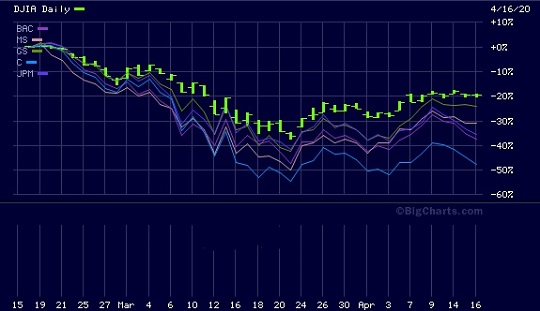Investing in the stock market can be a thrilling and potentially lucrative endeavor. While some investors prefer diversifying their portfolios through mutual funds or exchange-traded funds (ETFs), others choose to focus their efforts on individual stocks.
This approach, known as single stock trading, involves investing in specific companies rather than broad market indexes. In this article, we will explore the concept of single stock trading strategy, its origins, and its evolution over time.
Understanding the Concept of Single Stock Trading
Single stock trading involves buying and selling shares of individual companies to generate profits. Unlike other strategies that spread risk across multiple securities, this approach concentrates resources on select companies. Traders need to conduct careful research, analysis, and decision-making to identify potential winners.
It requires evaluating company fundamentals, market trends, and timing for optimal entry and exit points. While offering potential gains, single stock trading carries risks that can be managed through diversification and staying informed about market conditions.
The Origins and Evolution of Single Stock Trading Strategy
Single stock trading strategy has a fascinating history, originating from the days when individuals gathered in coffeehouses to exchange shares. As markets evolved and technology advanced, this practice became more accessible to a wider range of investors.
Advancements in computing power and real-time market data have revolutionized single stock trading, empowering individual investors with sophisticated tools once reserved for institutions. This democratization has allowed retail investors to develop personalized strategies based on their investment goals and risk tolerance.
Understanding the fundamental principles and associated benefits and risks is essential for navigating this strategy effectively.
Defining a Single Stock Trading Strategy
A single stock trading strategy is a systematic approach used by investors to select individual stocks for their portfolio. It involves analyzing factors such as company financials, industry trends, market conditions, and technical indicators to make informed investment decisions.
This strategy requires discipline, patience, and a deep understanding of the underlying companies. Thorough research on financial health, monitoring industry trends and market conditions, utilizing technical analysis, and maintaining a long-term perspective are essential components of a successful single stock trading strategy.
Exploring the Benefits and Risks
Single stock trading strategies offer the potential for higher returns compared to diversified portfolios. By focusing on individual companies with strong growth prospects or undervalued stocks, investors can capture substantial gains when their chosen stocks outperform the broader market.
However, this approach also exposes investors to company-specific risks such as poor financial performance, management issues, or regulatory hurdles. Market volatility and external factors can further impact the value of individual stocks.
It is crucial for investors to assess their risk tolerance and diversify their portfolios accordingly to manage these risks effectively.
Fundamental Analysis: Digging Deep into a Company’s Financials and Prospects
Fundamental analysis is a comprehensive approach that allows investors to gain a deep understanding of a company’s financials and prospects. By evaluating various factors such as financial statements, management team, competitive position, and growth prospects, investors can make informed decisions about the value of a stock.
When conducting fundamental analysis, one essential aspect is the evaluation of a company’s financial statements and ratios. This involves scrutinizing the income statement, balance sheet, and cash flow statement to assess the overall financial health of the company.
Key ratios like price-to-earnings (P/E), price-to-sales (P/S), and return on equity (ROE) provide valuable insights into the company’s valuation and profitability.
However, fundamental analysis goes beyond just numbers. It also requires analyzing industry trends and understanding the competitive landscape in which the company operates. By studying market dynamics, identifying competitive positioning, assessing barriers to entry, and potential disruptors, investors can gauge a company’s long-term prospects.
Industry trends play a significant role in determining the success or failure of a company. Investors need to identify emerging trends that could impact revenue growth or market share. Additionally, understanding how competition within an industry affects a company’s ability to thrive is crucial for making informed investment decisions.
Moreover, fundamental analysis delves into evaluating a company’s management team. The skills and experience of executives influence the strategic direction of a company. Investors assess their track record, leadership qualities, and decision-making abilities to gauge whether they are capable of driving future growth.
Technical Analysis: Studying Price Patterns, Trends, and Indicators
Technical analysis involves studying historical price and volume data to identify patterns, trends, and indicators that can predict future stock movements. Traders use charts to find support and resistance levels, which help determine optimal entry and exit points for trades.
Moving averages, MACD, RSI, and other indicators are used to identify trend reversals and overbought or oversold conditions. By incorporating technical analysis into their strategies, traders gain insights beyond fundamental analysis and increase their chances of success in the stock market.
Warren Buffett’s Value Investing Approach: An Iconic Example of Long-Term Success
Warren Buffett, the “Oracle of Omaha,” is renowned for his value investing approach. He seeks undervalued companies with strong fundamentals and long-term growth potential. Berkshire Hathaway, under his leadership, consistently outperforms the market.
Coca-Cola, American Express, and Apple are long-term holdings due to their enduring advantages and favorable valuations. Buffett’s philosophy emphasizes understanding businesses, holding stocks for the long term, and having a margin of safety when buying shares. His disciplined approach focuses on high-quality companies at attractive prices.
Peter Lynch’s Growth Investing Strategy: Spotting Potential Winners Early On
Peter Lynch, the former manager of Fidelity Magellan Fund, achieved exceptional returns through his growth investing strategy. He believed in investing in companies with strong growth prospects and staying ahead of market trends.
Lynch’s successful investments in companies like Dunkin’ Brands and his management of the Fidelity Magellan Fund provide insights into his growth investing strategy. He looked for companies with sustainable competitive advantages, strong earnings growth, and innovative business models.
Lynch emphasized conducting thorough market research to identify emerging trends before they became mainstream. By staying ahead of the curve, he was able to spot potential winners early on and capitalize on their growth potential.
Before implementing a single stock trading strategy, it is crucial to backtest its effectiveness using historical data. This process helps gauge performance and assess risk-adjusted returns.
Note: The shortened version maintains the core ideas from the original paragraph while eliminating unnecessary repetition and redundant information.
[lyte id=’uJ7a8UIOJaE’]







